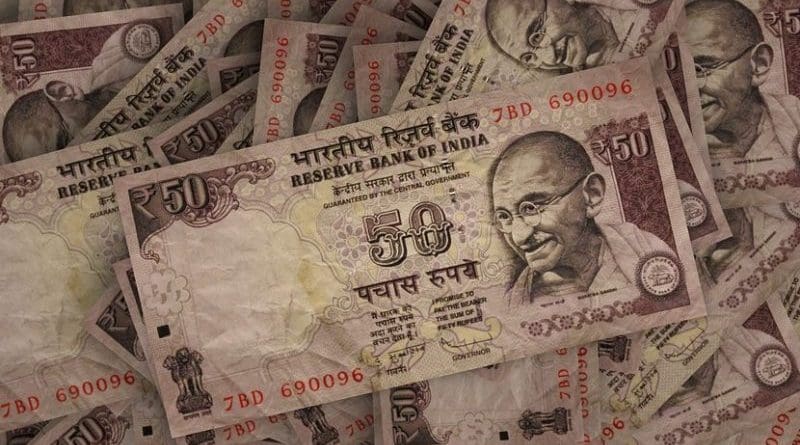India’s Free Trade Woes In The Face Of Deteriorating Balance – Analysis
By IDN
By Biswajit Dhar*
Leaders at the sixth Regional Comprehensive Economic Partnership (RCEP) Ministerial Meeting in August 2018 appear to have taken steps towards concluding the deal by the end of the year. With a possible endgame in sight, India’s stance in the negotiations should be of utmost interest. The viability of the proposed grouping hinges on India’s response to the more active RCEP participating countries’ calls for a highly ambitious trade liberalisation agenda.
The prospect of India’s positive response to these calls hinges on two sets of factors: the internal dynamics of the RCEP negotiations and India’s own domestic compulsions.
India has long been arguing that RCEP negotiations must put goods and services negotiations on parallel tracks. This is in keeping with New Delhi’s understanding that there are gains to be had in the services sector, such as loosening restrictions on labour mobility, that can soften the impact of granting market access concessions in the goods sector. But there are no clear indications from the other RCEP participating countries that they are willing to include services in the negotiating agenda in the manner that India is seeking.
A second issue internal to the negotiating dynamics of RCEP is the extent of market access that India is willing to provide. Initially in 2015, India’s offer to China was elimination of tariffs on 42.5 per cent of its traded products, while for other countries India was willing to offer between 65–80 per cent tariff elimination.
Since then, India has indicated that its tariff elimination offers would be 74 per cent for China, Australia and New Zealand, and 86 per cent for ASEAN. These offers fall short of the 90–92 per cent tariff elimination that most other participating countries are seeking in their aim to achieve a ‘high quality’ agreement.
At home a major concern is India’s rapidly deteriorating balance of trade that is being dragged down by weak merchandise exports. In 2009, India entered into a free trade agreement with ASEAN with the expectation that its footprint in its immediate neighbourhood could be significantly increased.
But this agreement has not worked out as planned for India. Instead its trade deficit with ASEAN has increased since the implementation of the agreement, mainly because of a lack of thrust in exports. The deficit went up from US$7.7 billion in 2009–10 to nearly US$13 billion in 2017-18.
India’s economic agreements with two other RCEP participating countries, Japan and South Korea, show similar trends. India’s trade deficit with Japan was US$3 billion in 2009–10 and has now doubled. The India-South Korea trade deficit has also more than doubled from US$5 billion to US$12 billion over the same period.
India’s overall trade deficit with the RCEP participating countries looks far worse, accounting for US$104 billion of India’s US$162 billion trade deficit in 2017–18, largely because of the China factor.
With virtually stagnant exports and imports growing by more than a fifth, India’s trade deficit in 2017-18 shot up by 50 per cent – the second highest this decade. Two adverse consequences of this situation have now emerged.
The first is the widening current account deficit, which is pushing towards a worrying threshold of 3 per cent of GDP. The second is the severe pressure on the Indian rupee, which has seen the currency fall to its weakest level ever. There are no signs yet that the textbook prescription – which says currency depreciation encourages exports and discourages imports, leading to an improvement in the trade balance — is working for India. If anything, the past few months have seen a worsening of the trade balance.
This unfolding situation is causing considerable anxiety among Indian policymakers, who are responding with across-the-board tariff increases. In February 2018 tariffs were hiked on mobile phones and select machinery, and more recently tariffs on more than 300 textiles and clothing products were increased from 10 to 20 per cent. The tariff increases are not limited to manufacturing products alone. Several agricultural products, including edible oils and lentils, are also covered by the tariff hikes.
An announcement in September 2018 by the Indian government that tariffs on ‘non-essential’ imports will be increased to stem the import surge will take the uncertainties around India’s trade policies a few notches higher. The criteria for identifying ‘non-essential’ products are yet to be disclosed.
The message from India is unambiguous: substantial market opening may not be on offer in an RCEP deal, at least until its current domestic economic uncertainties blow over. But the harsh reality is that India’s agriculture and manufacturing sectors have been stuck in the quagmire of low productivity for decades, and the policy framework that can break this vicious cycle has remained elusive. In order for India to be a willing partner in the regional integration project in Asia, Indian policymakers and businesses must work towards a quick turnaround of the domestic economy.
*The author is Professor at the Centre for Economic Studies and Planning School of Social Sciences, Jawaharlal Nehru University. This article first appeared on October 9, 2018 in EastAsiaForum.

